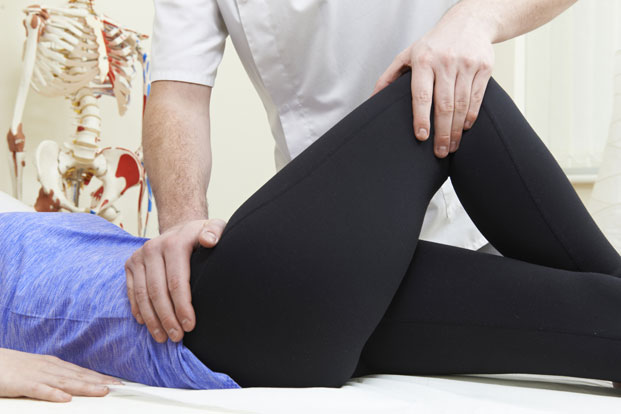Most people rarely consider the role hips play in our lives. Until, that is, something happens to them and causes every movement to bring extreme pain. Because of their location on the body, the hips rotate and are involved in practically every movement -sitting, standing, walking, reaching and bending.
The most common type of hip pain stems from arthritis, specifically osteoarthritis, or what some term degenerative joint disease. It is the second most common of the 100 forms of arthritis and is one of the most debilitating because of the range of actions involving the hips.
Hip arthritis happens when the joint’s surface cartilage wears away, leaving the bone exposed and causing pain and stiffness. Mild cases can be managed with rest, ice, over-the-counter medications and reduced activity. In some cases, a joint injection is used to deaden the pain. But in severe forms, a total hip replacement may be necessary.
Osteoarthritis usually starts gradually, with pain flare-ups of that come and go, and increasing stiffness. At this stage, most patients will self-medicate with over-the-counter pain medications and rest. But as symptoms worsen, they will seek medical attention, and when pain become chronic or acute, a doctor’s examination will usually result in the osteoarthritis diagnosis.
Typical hip arthritis symptoms include pain in the thigh, buttock or groin that worsens when walking, standing or twisting. Contrary to popular belief, it is not caused by overuse. Long-distance runners who have been studied are not more likely to get arthritis than individuals who are less active. In fact, certain exercises can decrease hip pain.
Some people believe the onset of arthritis is a natural part of aging. Not true — in fact, some younger people develop the condition, while some elders are never troubled by it. It is an actual disease — not just a matter of deterioration. It can be managed with medication in mild cases.
Conditions that Mimic Arthritis
Arthritis isn’t the only disease that can cause pain in the hip area. There are several conditions that can cause pain to radiate to the hips.
These include:
Causes of Arthritis
Fortunately, arthritis does not lead to other diseases and is not contagious. But it is a disease that often runs in families and can deteriorate if not managed or otherwise treated. Predicting who will get it with any accuracy is not possible, although there are risk factors that increase the odds.
These include:
Although pain in the hip usually causes activity to decrease, most of the afflicted can continue some moderate forms of exercise. It is important to keep up with some activity, but high-impact activities like running should be curtailed. Arthritis patients tolerate swimming, stationary bicycling and water aerobics well.
In some cases, osteoarthritis in the hip area can lead to a leg-length inequality. This can be corrected with surgery, and some shoe lifts can ease symptoms before surgery.
Treatment for Hip Pain
There is currently no cure for arthritis, but the condition can be managed. Maintaining a normal body weight eases pressure on the joints, and engaging in less strenuous exercise will also help to ease.pain. Nutritional supplements like glucosamine and chondroitin have been helpful in some cases, although they aren’t helpful for everyone.
Over-the-counter medications for pain including acetaminophen (Tylenol) and ibuprofen (Advil or Motrin), naproxen (Naprosyn) and aspirin help with some levels of pain. Doctors may write a prescription for non-steroidal anti-inflammatory drugs (NSAIDS) is when over-the-counter medications aren’t working. However, steroids have side effects and their use needs to be monitored. NSAIDS include Tylenol #3, Percocet, Oxycodone, Vicodin and narcotic pain patches.
Surgical hip replacement occurs when non-surgical procedures don’t ease pain and when a patient’s quality of life is severely impacted. Although this is major surgery, the success rates over 10-year periods approach 90 percent, and most patients recover significant mobility and enjoyment of life.

Leave a Reply